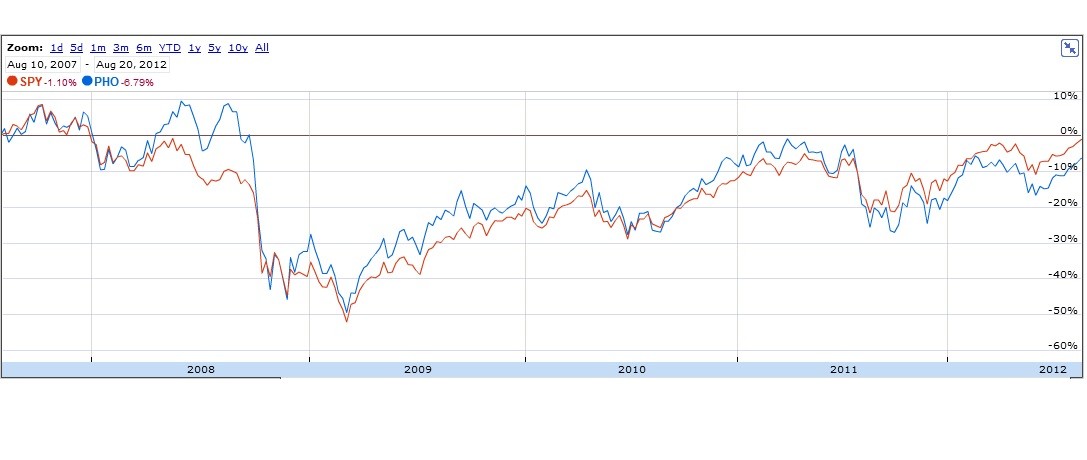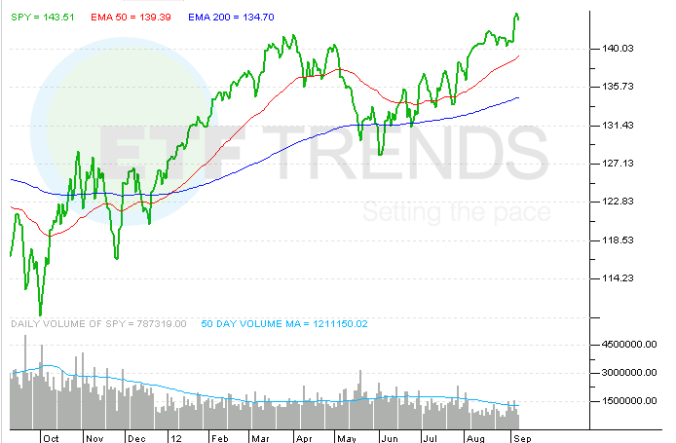How To Buy The Best Water ETF
Post on: 7 Август, 2015 No Comment

by Stoyan Bojinov on August 14, 2012 | Updated December 8, 2014
Exchange-traded funds have been embraced by self-directed investors and professional money managers alike thanks to their transparency, ease-of-use and cost efficiency benefits. As the product lineup grows more diverse, investors have taken advantage of being able to easily tap into virtually any corner of the investable universe. The commodities asset class in particular has seen growing interest from ETF investors, although one particular resource continues to fly under the radar for most [see also How To But The Right ETF Every Time ].
When it comes to lucrative upside potential and headline appearances, its hard to compete with gold and oil. From a fundamental perspective, however, one particular commodity offers an appealing thesis although often overlooked: water. Simply put, water plays an essential role in our everyday lives. The investment thesis is very straightforward; everything from our bodies to our factories require water to operate. The appealing factor is that this commodity has no real substitutes and the fact that roughly 3% of all the water in the world is actually suitable for human consumption [see also Doomsday Special: 7 Hard Asset Investments You Can Hold In Your Hand ].
Factors To Consider
Besides obvious factors such as expenses and liquidity, there are several other factors that should be considered when shopping around for a water ETF :
Supply Conditions

There is a limited supply of fresh water, and while technologies and treatment methods are being developed to tap into new reservoirs, we are still likely to face challenges as our ever-expanding world population grows thirstier. Growing rates of urbanization across emerging Asia and Latin America are also bolstering the demand for this essential good; this increase in population spurs an increase in demand for food and since water is a necessary component in farming, this puts extra strain on already tight supply conditions.
The reason why most water equities receive little to no attention from growth-hungry investors is because the they find themselves in heavily-regulated markets. Water companies are always faced with the challenge of delivering a crucial product to consumers while at the same time generating a profit for shareholders as well as trying to avoid political backlash. As such, the water sector offers stability similar to electric utilities from a fundamental perspective, but it does warrant a closer look from those looking to tap into a rapidly expanding corner of the economy.
Utilities vs. Treatment
As with any corner of the economy, it pays to take note of the various industries within the broader sector. Utilities, wastewater treatment companies, as well as businesses working to develop new ways to deliver potable water are all contenders for those looking to invest in this asset class. Companies involved with water infrastructure, such as the maintenance and conduction of pipelines or waste water treatment, offer a risk/return profile that is perhaps best comparable to investments in the utilities sector; both have a history of low-volatility, limited upside potential in bull markets, as well as a consistent track record of dividend distributions. On the other hand, firms involved in developing new treatment technologies like desalination bear a higher level of risk given the inherently unpredictable nature of their business when compared to large, established utility companies with relatively fixed costs.














